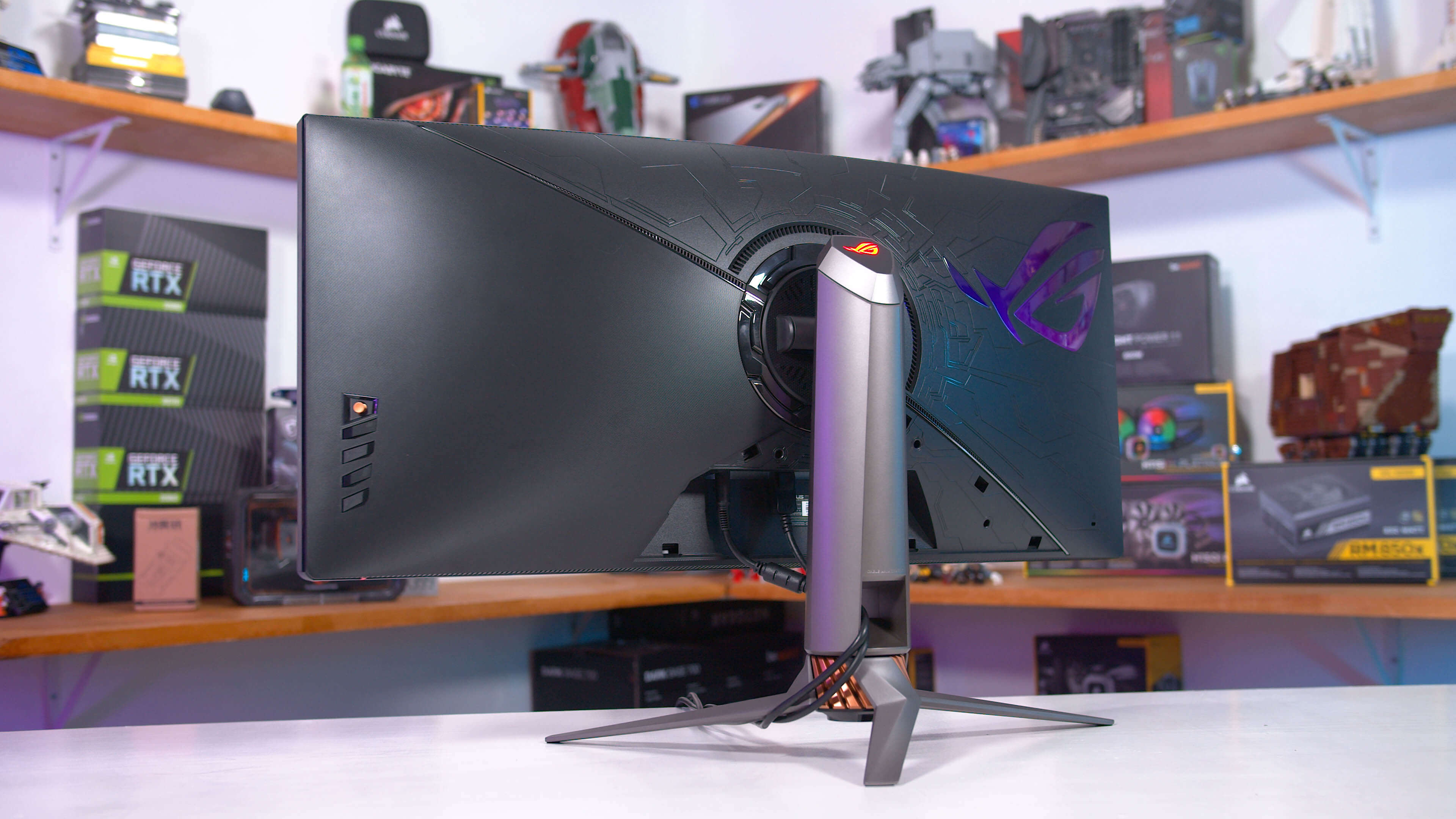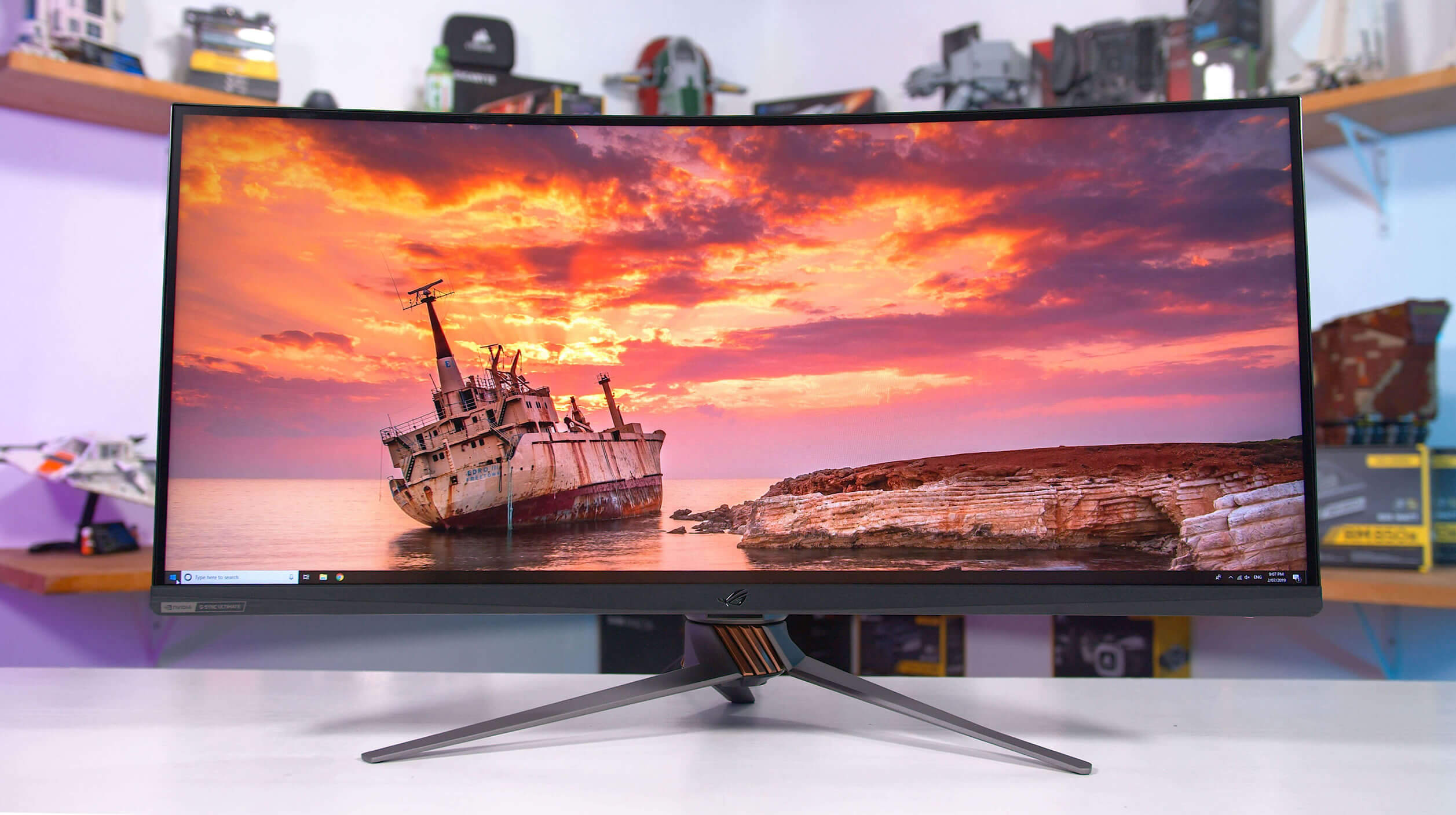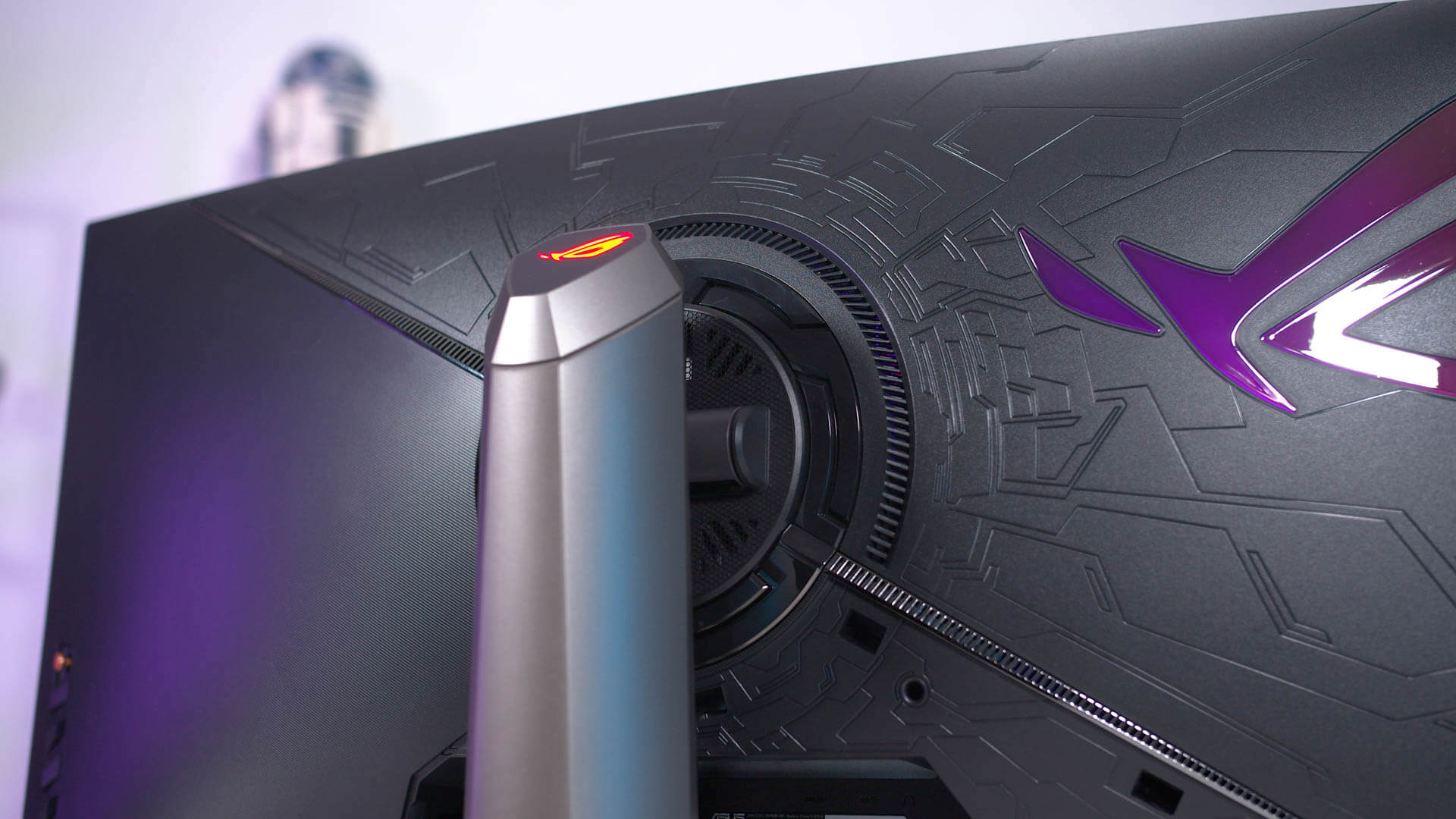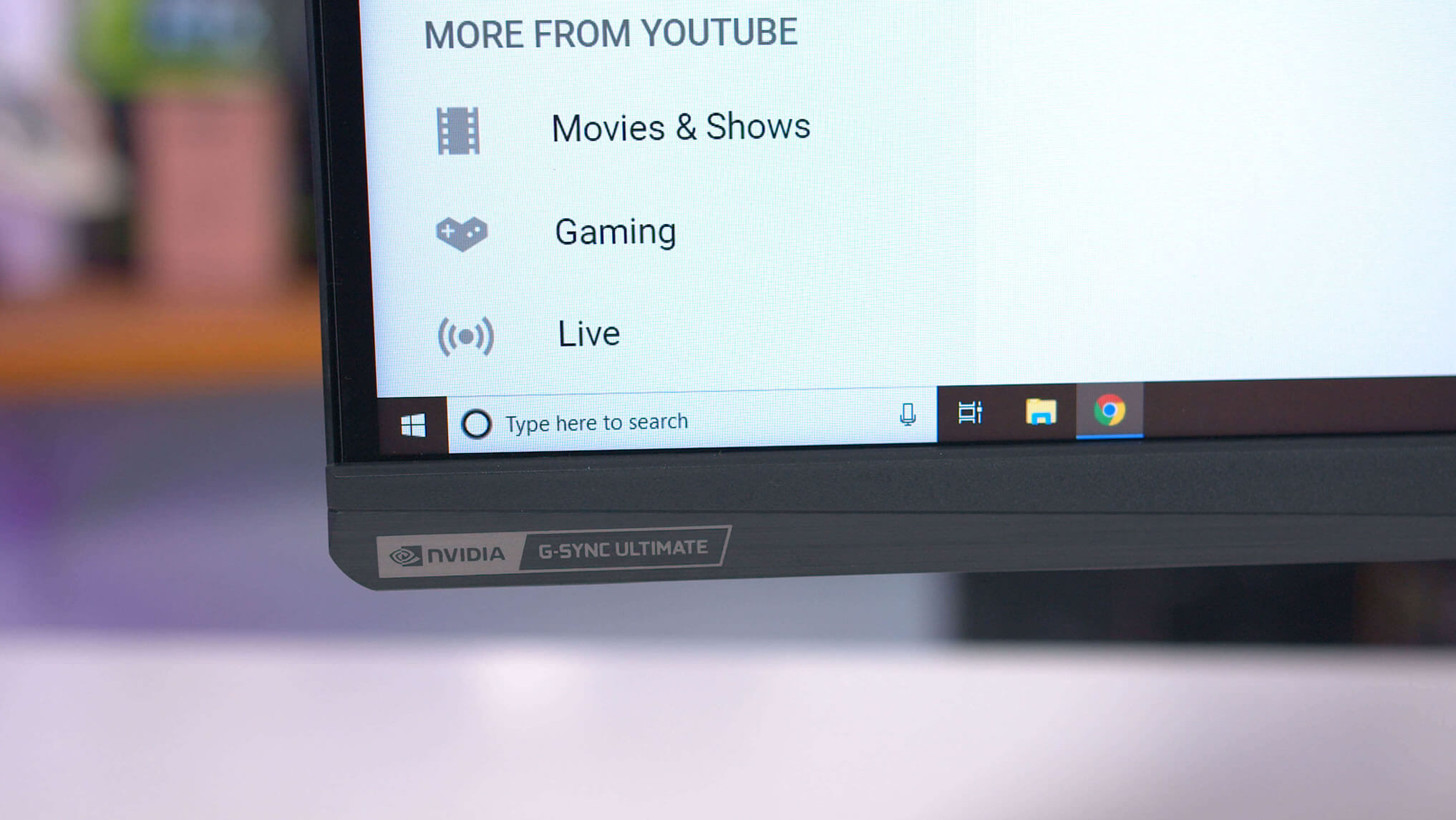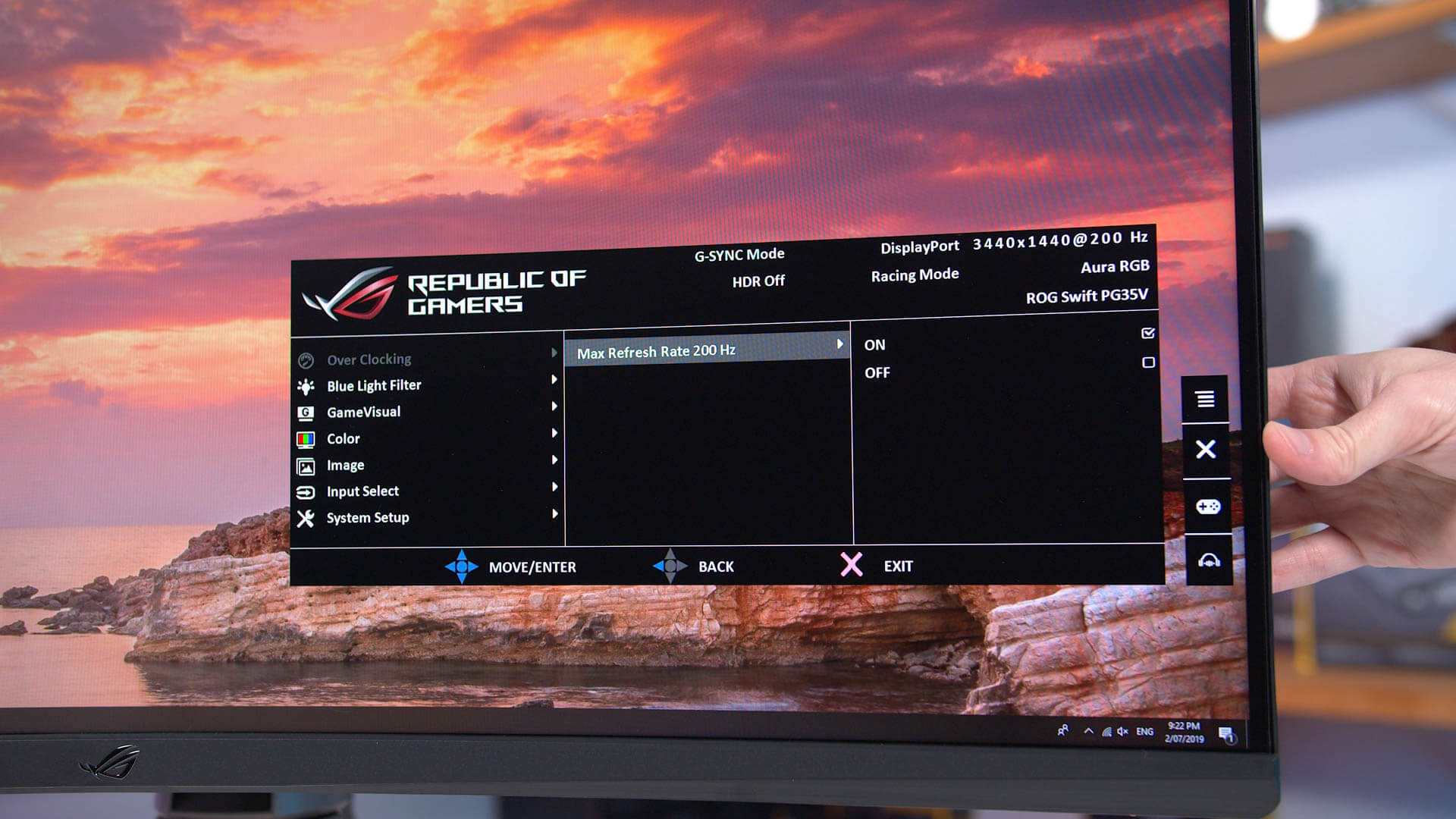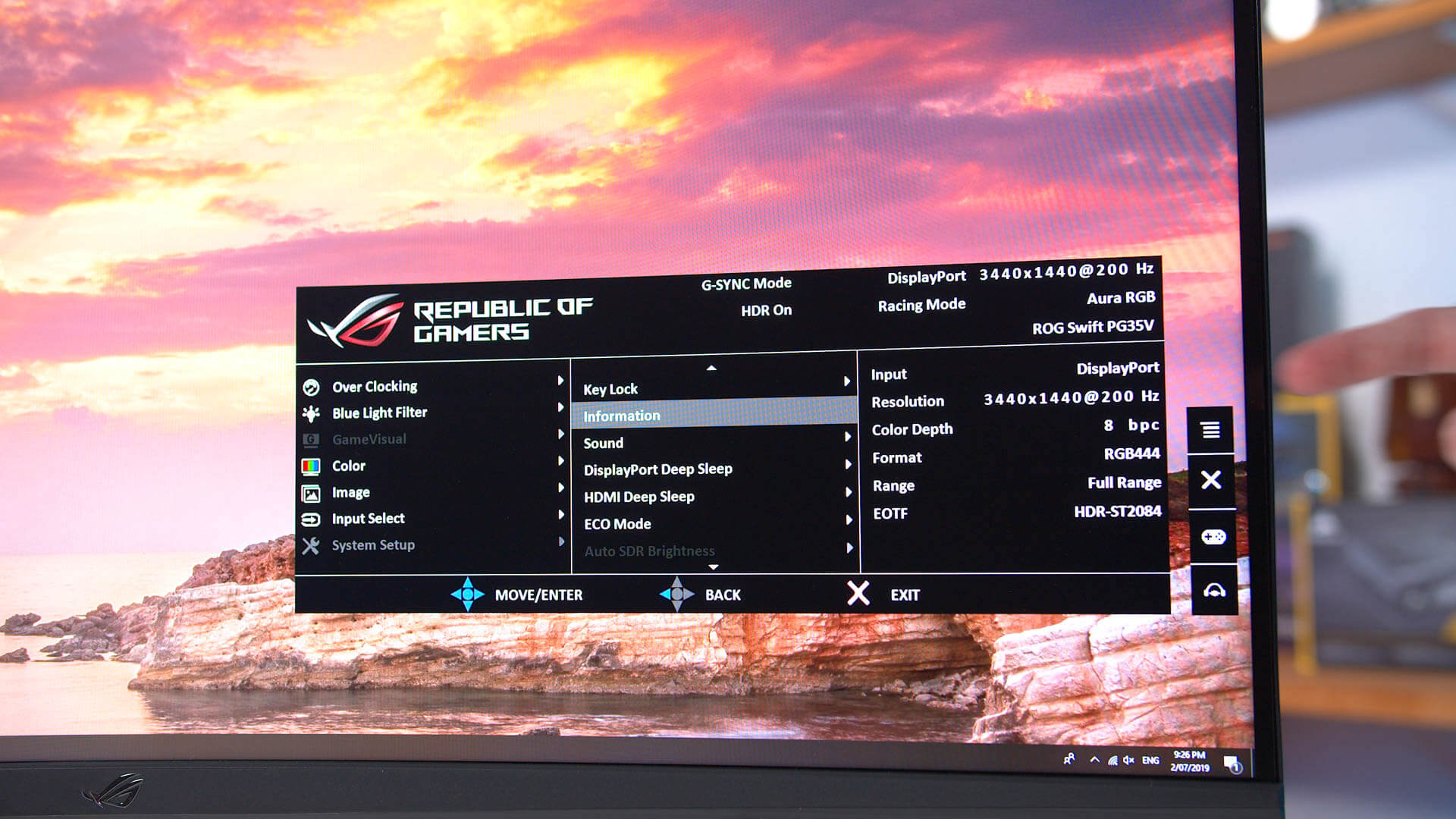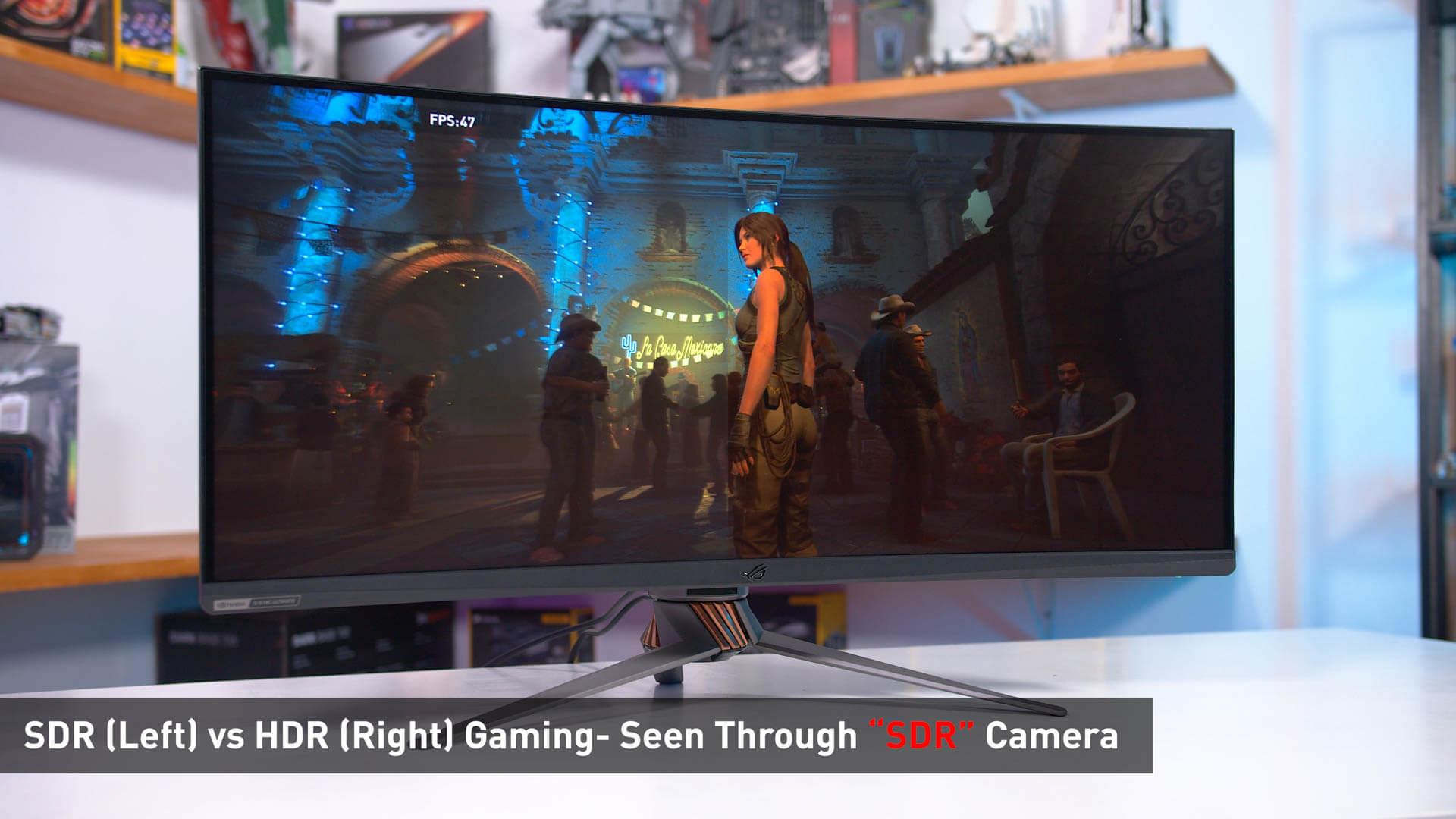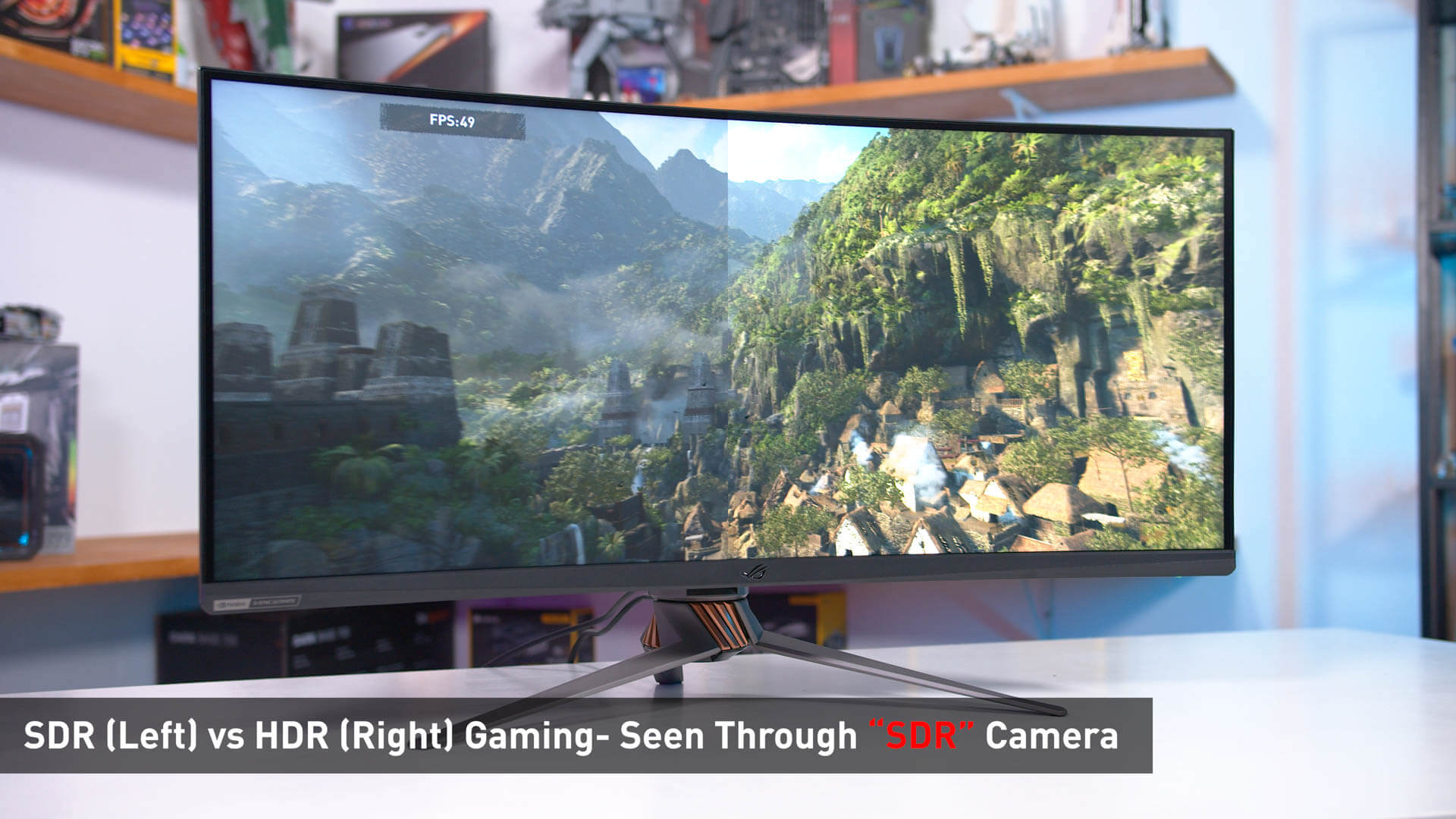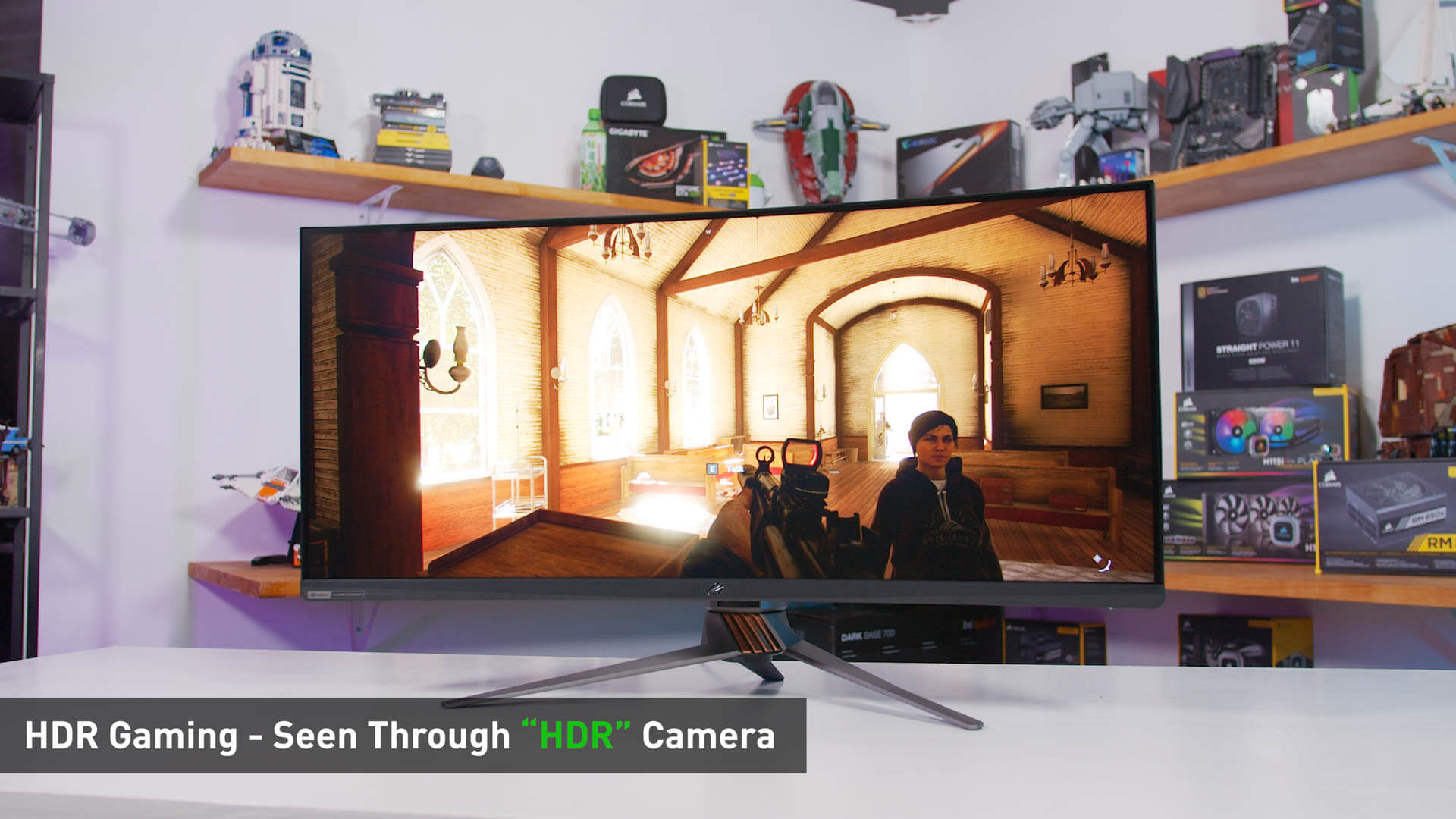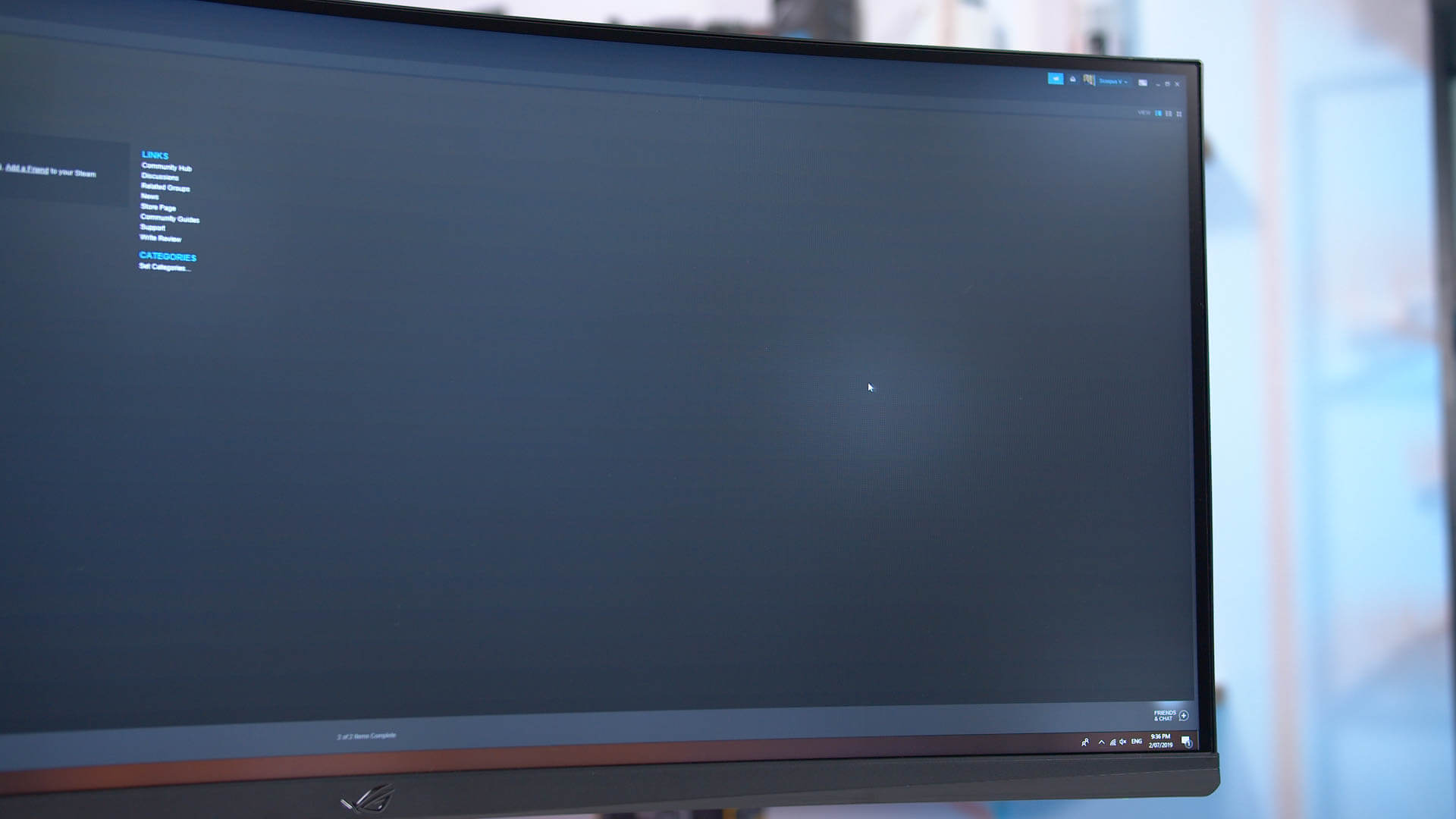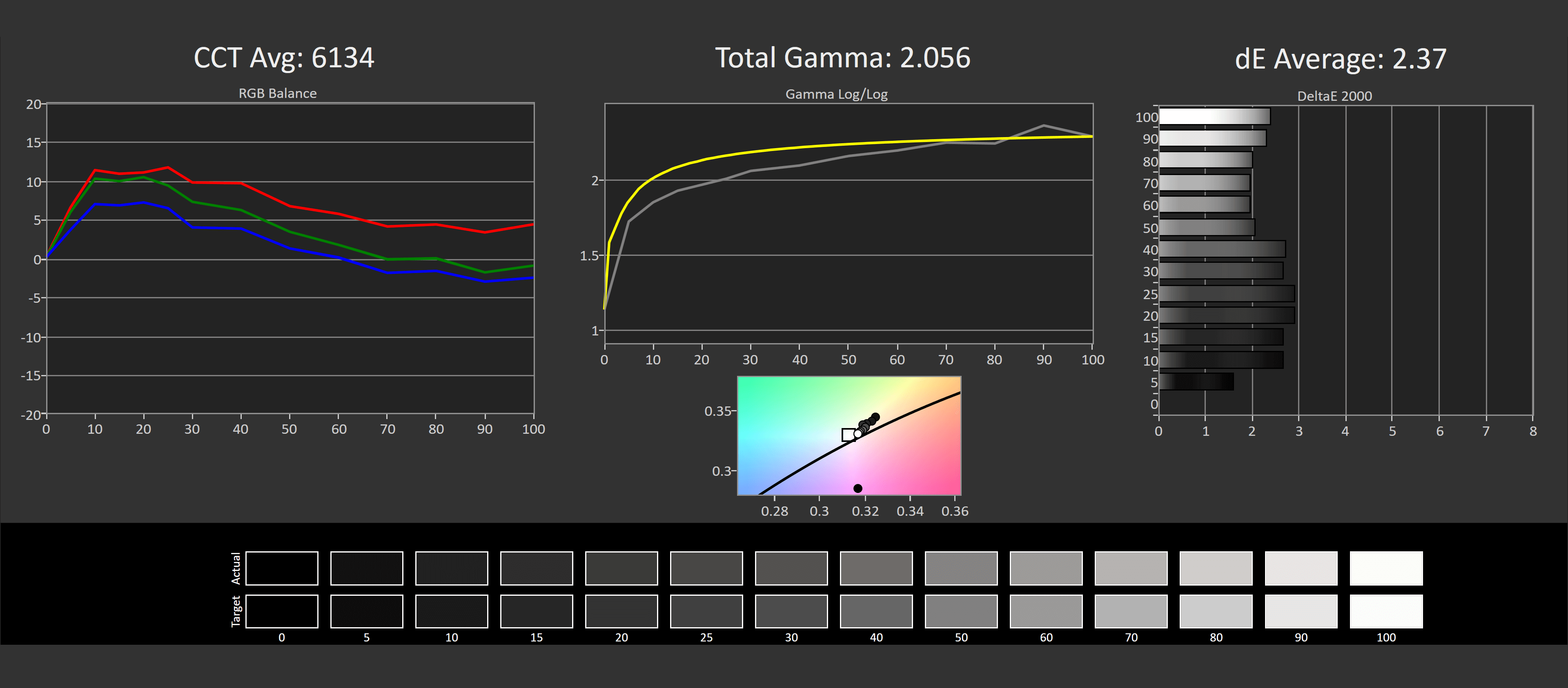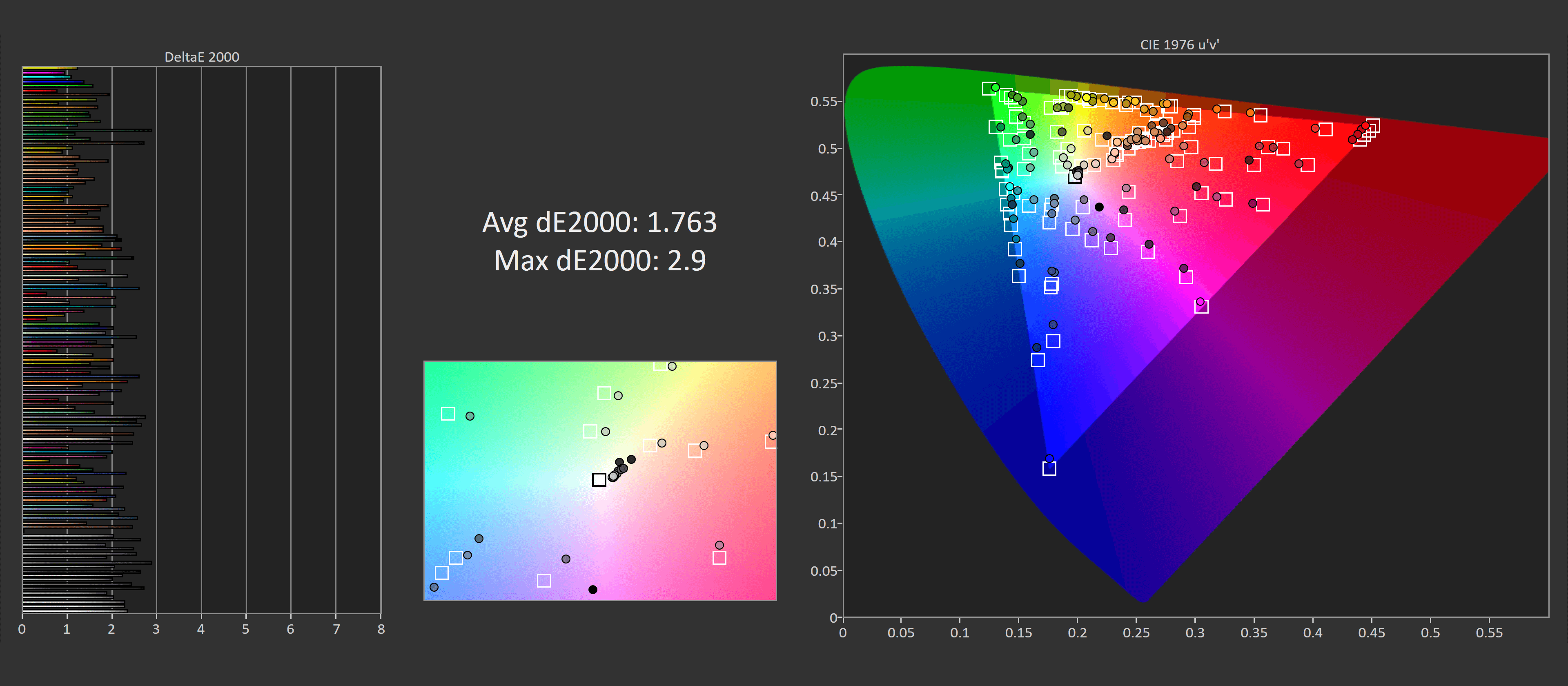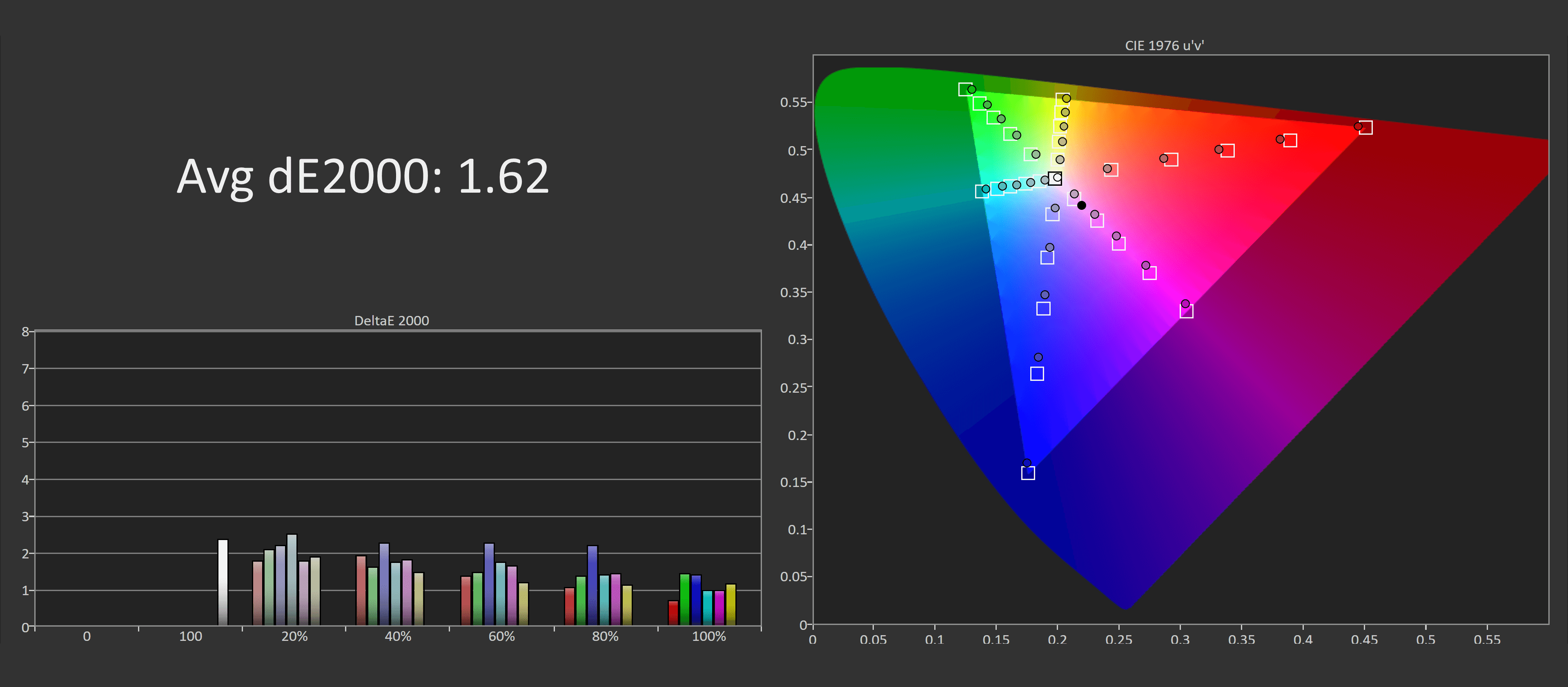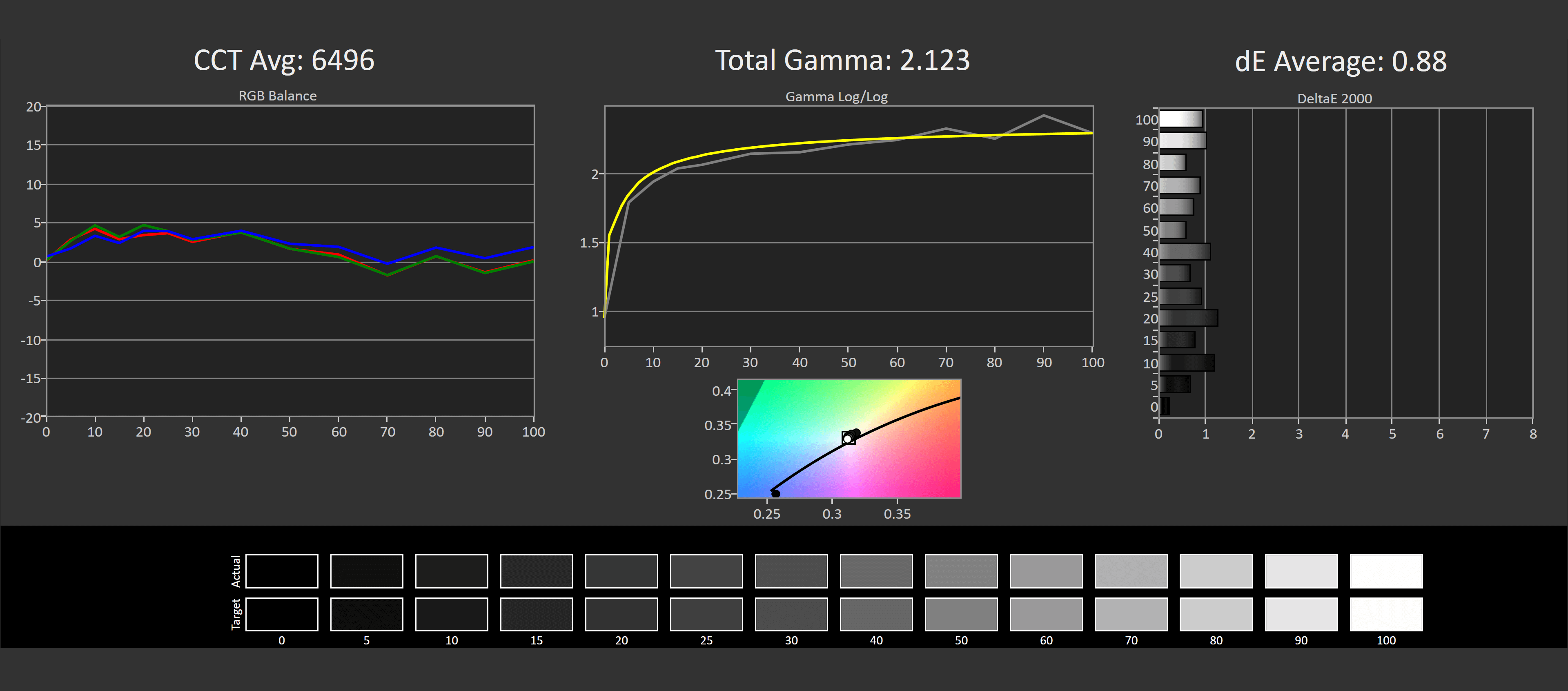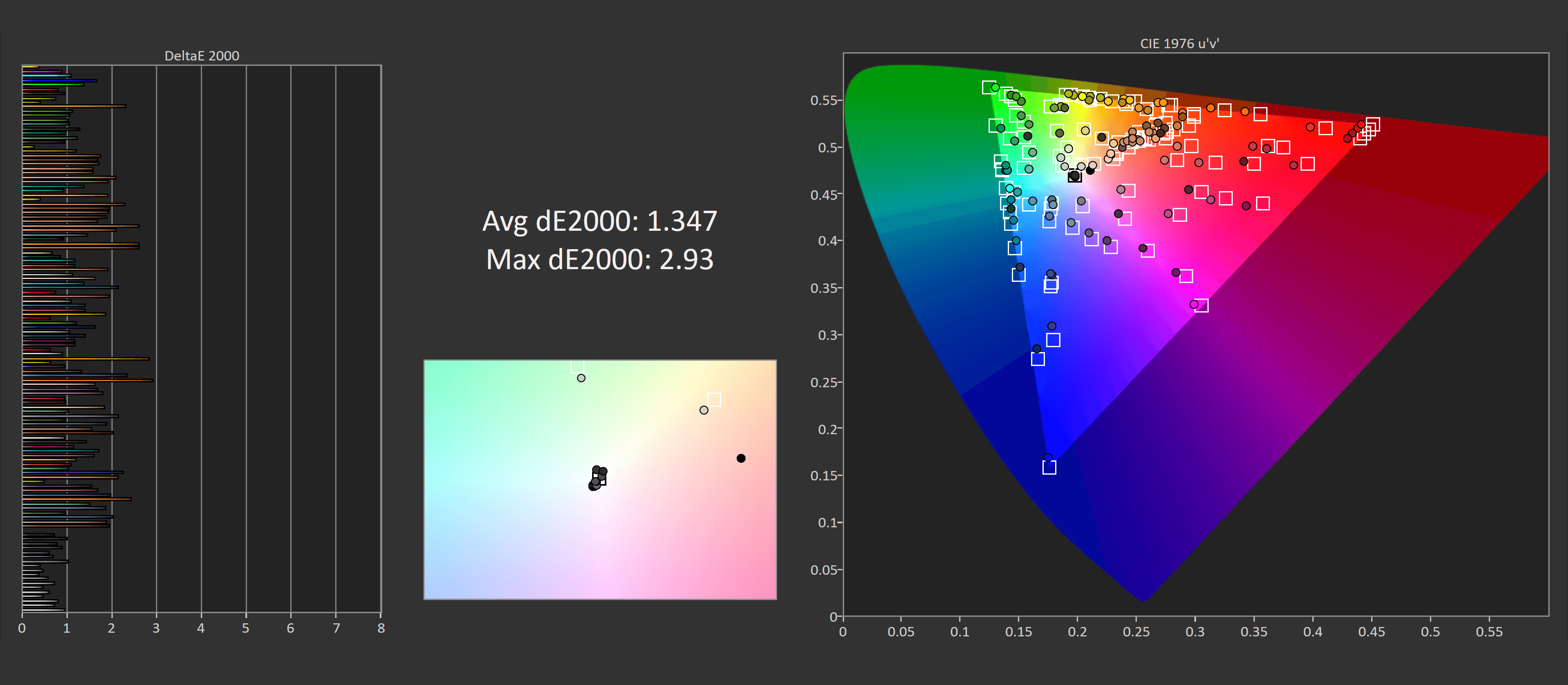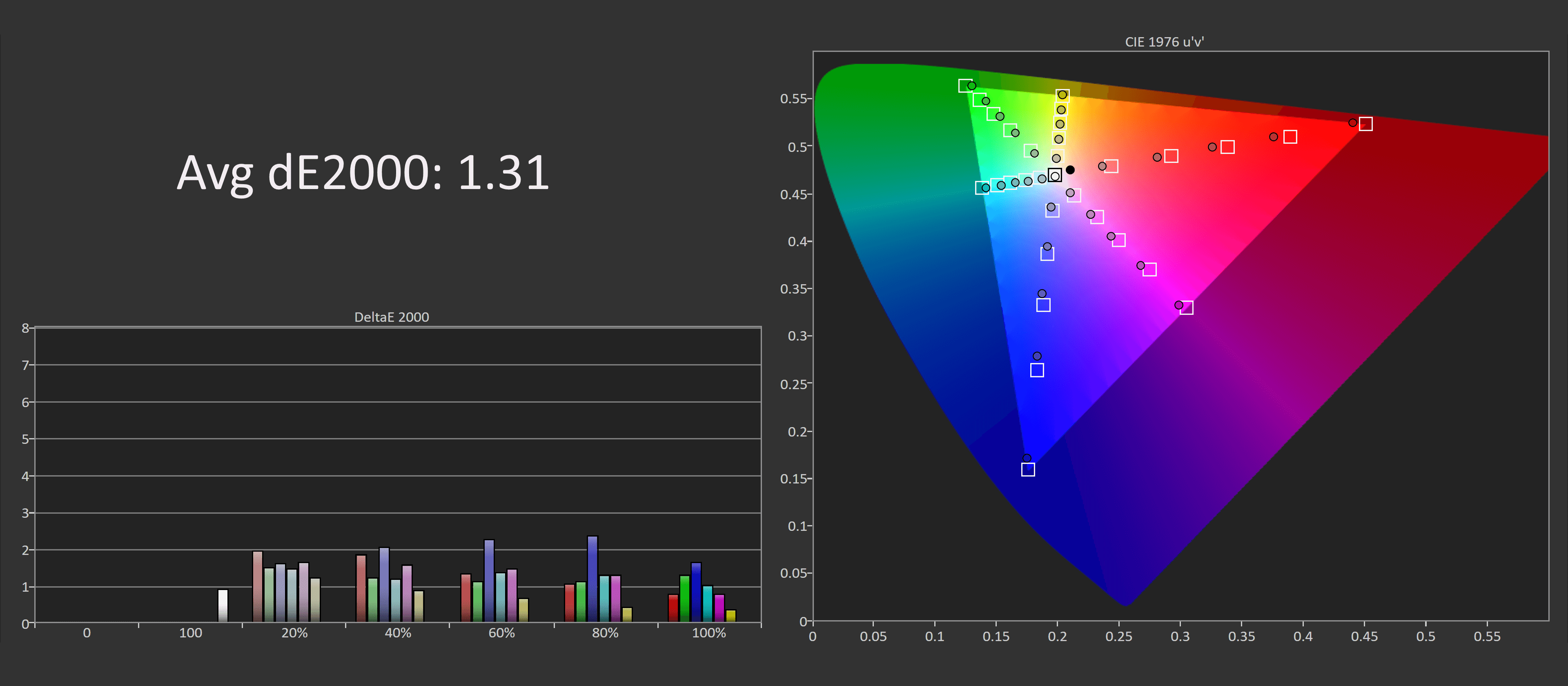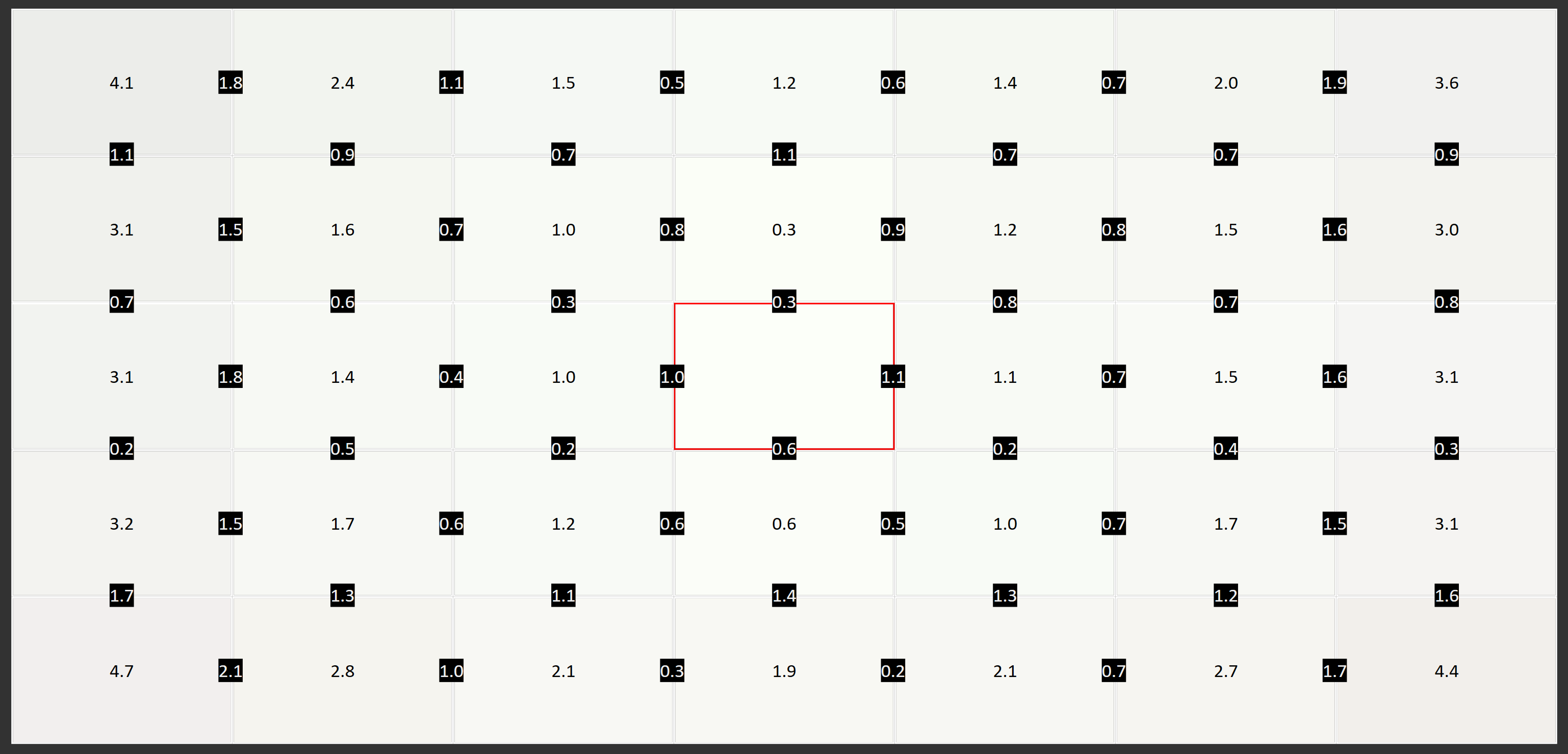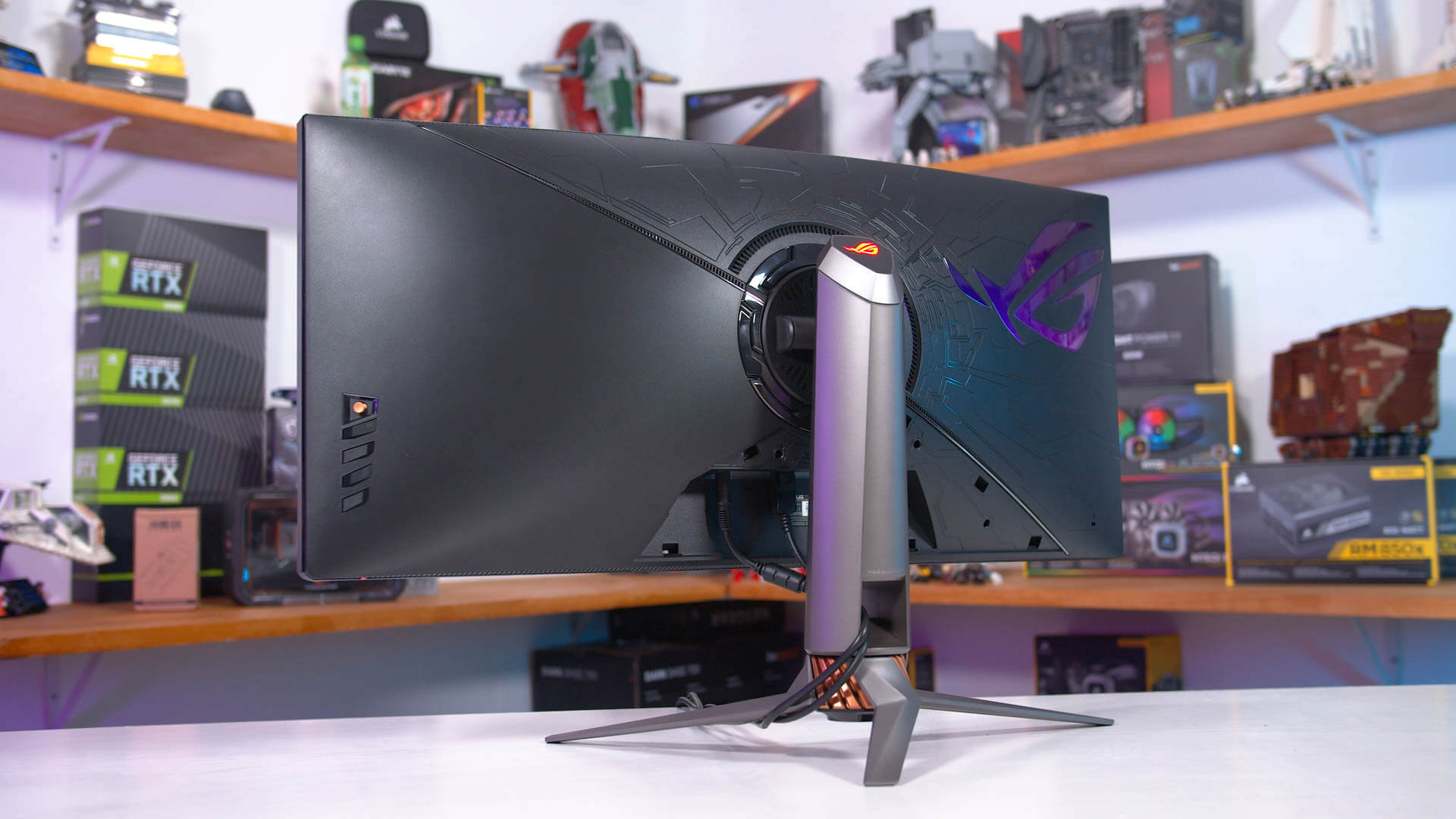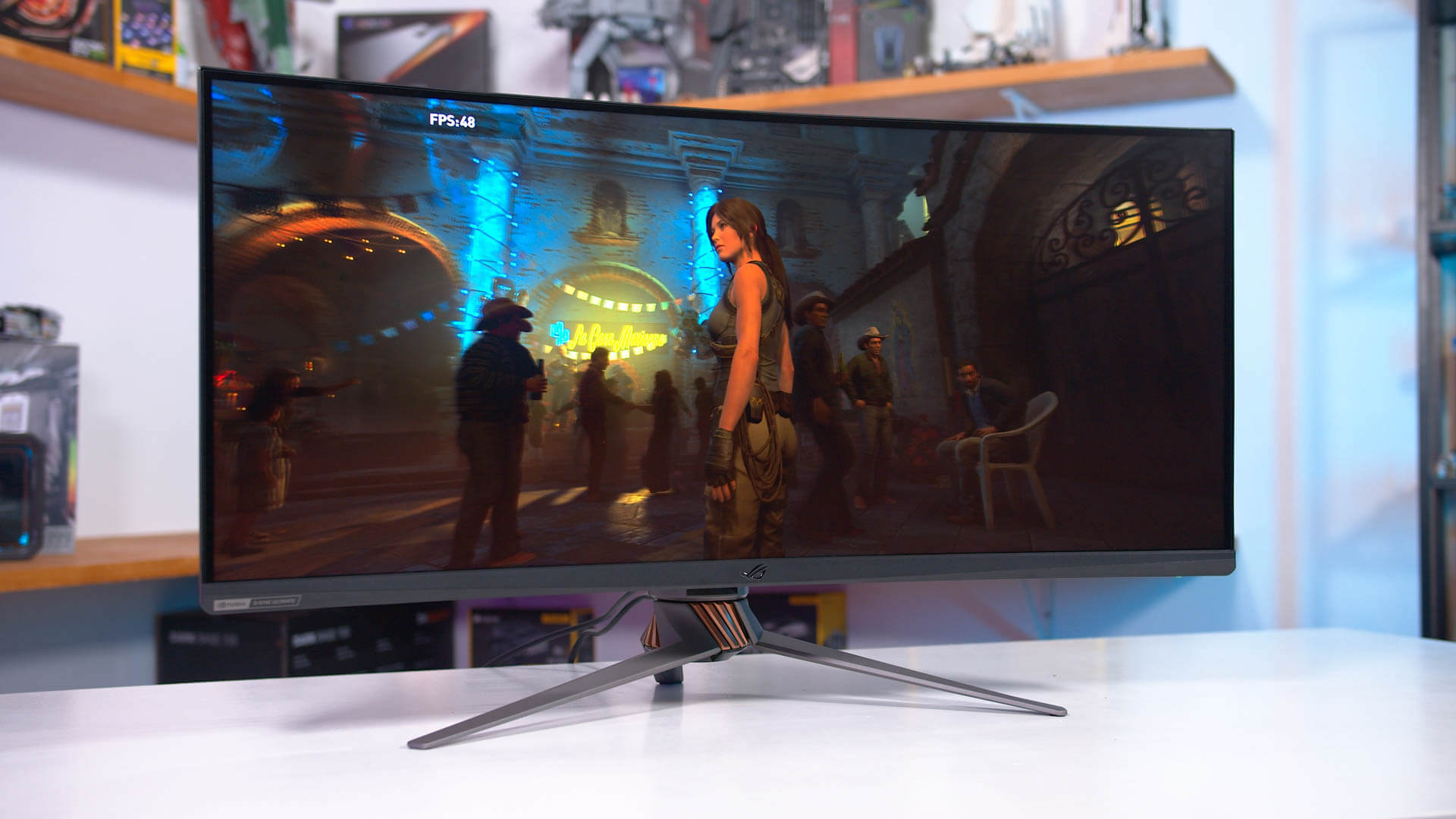The gaming monitor we're reviewing today has been a long time coming. It was first shown at Computex 2017 and got delayed again and again, but it's finally making it to market in the middle of 2019. The Asus ROG Swift PG35VQ is, in short, a wallet-destroying 200Hz HDR ultrawide monitor.
Based on a new super high-end ultrawide HDR-capable panel from AU Optronics, the specs on offer are impressive: 35-inch 3440 x 1440 curved VA panel running up to 200 Hz, significantly increasing the refresh rate capabilities of what we've seen from 1440p class ultrawides.
On top of that, we're getting proper HDR functionality through a 512-zone full array local dimming backlight, 1,000 nits of peak brightness, and 90% DCI-P3 coverage. The cherry on top is G-Sync Ultimate support.
All of that comes at an enormous price tag. Asus wouldn't confirm exactly how much since the monitor is still a few weeks away from the official launch, but it is up for pre-order in the UK for £2,700, which would put it in the $2,500 to $3,000 range.
The Asus ROG Swift PG35VQ is, in short, a wallet-destroying 200Hz HDR ultrawide monitor.
The PG35VQ's design is similar to what we've seen on previous Asus ROG monitors and honestly we're not huge fans of it. We favor a more sleek and minimalist aesthetic, but Asus has historically gone with these heavier, gamer designs... we kind of get why they do it, but the crazy patterns on the back and copper highlights on the stand just don't get us excited.
RGB is still present here, you get a large ROG logo on the back, a projected light that comes out the bottom of the stand, and an additional light at the top of the stand. You won't see a lot of these elements in standard operation, or you can just disable them like we did. Build quality is standard for Asus, the stand is sturdy and uses metal for the legs, but the rest of the housing is just plastic in a few different textures. We're happy that the bezel is thinner than on previous 27-inch G-Sync Ultimate displays, too.
The stand supports height, tilt and swivel adjustment as you'd expect from a premium monitor. There's also VESA mounting compatibility if you need it. For ports you get HDMI 2.0 and DisplayPort 1.4 – you should be using DisplayPort – plus a two-port USB hub and a 3.5mm audio output.
The on-screen display is controlled through a directional toggle where many settings reside. To access the 200 Hz mode you have to enable it in the menu as the monitor ships with a default max refresh rate of 180 Hz. Then you have color controls, backlight controls, HDR features, and so on, which we'll mention throughout the review. Other gaming-specific features include cheat crosshairs, FPS counters and more. Everything you're used to with an Asus ROG monitor.
Like the Asus PG27UQ and other similar G-Sync Ultimate monitors, the PG35VQ requires active cooling. There's a small fan built into an area near the inputs, but it's noticeably quieter than the fans that shipped with the PG27UQ. You will hear the fan in a very quiet room, but in most conditions we'd say the PG35VQ is nearly silent and it will be drowned out by other noise.
Big Features, Great Performance
One of the main attractions on the PG35VQ is the 200 Hz refresh rate, a first for 3440 x 1440 ultrawides. Previously the cap for these monitors was 144 Hz, which you can get from competing monitors from LG and MSI for around $1,000, but for some 144 Hz is not high enough or not future proof enough.
The good news is DisplayPort 1.4 has enough bandwidth for 3440 x 1440 at 200 Hz with 8-bit color. This is in stark contrast to the 27-inch 4K 144 Hz HDR panels, which were capped to 120 Hz with 8-bit color and needed chroma subsampling at 144 Hz. There's no need for chroma subsampling at all with the PG35VQ and you can happily use this in an SDR configuration at 200 Hz.
For HDR gaming, the bandwidth limit for uncompressed 10-bit HDR at 3440 x 1440 is 144 Hz. Above that, say you want to play HDR games at 200 Hz, you have one of two options: you could use chroma subsampling, or you can drop the monitor down to 8-bit color with HDR which is the default behavior.
Now you might be thinking, hang on a moment, don't you need 10 bit color for HDR? And the answer is yes, and no. While 10-bit color is one of the improvements HDR is designed to make over SDR, and is part of the HDR10 standard, there's actually nothing stopping you from dropping down to 8-bit while maintaining HDR support with a wide color gamut and increased contrast. 10-bit color merely increases the number of colors to 1.07 billion and helps smooth out gradients to reduce banding, but it isn't a requirement for any other aspect of HDR video. For the most part a 10-bit source can be shrunk down to 8-bit with minimal quality loss.
We've tried many games in HDR mode with 8-bit and 10-bit color and couldn't spot any differences whatsoever. In fact, in games that did have some color banding with gradients, that banding was still present in the 10-bit mode. Given the panel itself is still a native 8-bit panel with FRC for 10-bit support, we don't think there's a significant downside to running this display at 8-bit HDR at 200 Hz. That said, your mileage may vary, especially for HDR films which are somewhat different to games, and if you do notice some gradient banding it could be worth dropping down to 144 Hz to gain 10-bit color support.
Throughout our time reviewing this monitor the simplest solution was to run the monitor at 200 Hz with 8-bit color at all times, whether we were in SDR or HDR mode. The visual quality is excellent and far better than what you get if chroma subsampling is required and we're simply stoked that you can use the full capabilities of this panel without having to mess around with subsampling.
As for the 200 Hz refresh rate, to my eyes it's a big step up from 100 Hz in terms of smoothness, and a lesser but still somewhat noticeable step up from 144 Hz. The main question is whether you have the GPU horsepower to drive games at this resolution and refresh rate. With an RTX 2080 Ti you can get 150 to 200 FPS in games like Fortnite and other less intensive esports-ish titles, but with triple-A games on Ultra settings, 100 FPS is a more realistic target. You can always tweak some settings for better performance, but this is with a 2080 Ti, anyone else with a slower GPU will face an uphill battle to hit above 144 FPS.
Having said this, upgrade cycles for monitors are long and having something that does 200 Hz now is going to be right at the top of the market for years to come and will let you enjoy many new GPU upgrades without maxing out the capabilities of your monitor. It's the luxury of being able to afford this kind of monitor now and with G-Sync Ultimate support you also get a smooth experience if your frame rates are well below 200 FPS.
With chroma subsampling being a non-issue with this monitor, our next question was whether this VA panel is capable of a 200 Hz refresh rate. Given response times tend to be an issue with VAs, we were curious to see if AU Optronics could deliver the required sub-5.0 ms response times for a true 200 Hz experience.
Because this monitor has an FALD backlight, response times are governed by two aspects: the response of the liquid crystals, which is the usual determining factor for overall response times, as well as the response of the backlight. And this is crucial because the PG35VQ has different response behavior depending on whether the dynamic backlight is enabled or disabled.
With the FALD backlight enabled, the best overdrive mode to use is Extreme. With this mode enabled, there are some good benefits: overshoot is well managed and often non-existent, and there's not much dark level smearing from very slow dark transition times. However the FALD backlight's fall time is a little slow on the tail end in some instances, which pushes out some transition times. Overall though, the average grey to grey transition is 6.09ms, a little shy of the 5ms target but considering more than half of the overall transitions measured were within that window - some as fast as 2ms - we'd say this is borderline capable of 200 Hz and fine for 144 Hz.

With the FALD backlight disabled, the best overdrive mode to use is Normal as the Extreme mode introduces far too much overshoot with the dynamic backlight off. It seems the Extreme mode has been specifically tweaked to work well in tandem with the FALD backlight, which we guess makes sense as most users will leave it enabled for gaming. Without the FALD backlight impacting the tail end of transitions, this combination of settings has a faster grey to grey average of 4.55ms which is perfect for 200 Hz. However, dark level smearing is worse in this mode than if you leave the FALD backlight on with Extreme overdrive. It also has more overshoot in general, although not to a severe extent.
So there are pros and cons to each scenario, we believe most gamers will leave the dynamic backlight enabled for non-HDR gaming in which case Extreme is the better choice and 200 Hz is borderline achievable. For most users this will be fine and with this combination ghosting, smearing or inverse ghosting isn't much of an issue despite being a VA panel.

Input lag results were excellent, I measured these numbers with the dynamic backlight and G-Sync enabled and with under 3.0ms of latency this monitor is in line with other gaming-grade panels I've tested.
Let's talk about the backlight now. There are 512 individual zones across this 35-inch panel, which is enough for a solid HDR experience. Compared to the 27-inch HDR monitors with 384 zones, each zone is a bit larger with the ultrawide, but this is mitigated by the use of VA technology instead of IPS. Haloing is still present, but it's less noticeable when the monitor is viewed from the front. It can look a bit worse at off-angles due to the middling viewing angles of VA panels, but in most use cases the FALD backlight works better here than in the PG27UQ due to higher native contrast.
For gaming and video playback, in almost all scenarios it's impossible to notice the FALD backlight in action, especially when set to the fastest mode which is lightning quick. However it's a mixed bag for productivity; when viewing large areas of solid colors, you can often spot haloing as the white mouse cursor moves around. My recommendation is to leave the backlight enabled for SDR gaming and general usage unless the haloing bothers you, in which case you should disable it for productivity work.
The HDR experience from this monitor is outstanding. We'd dare to say Asus' PG35VQ delivers the best HDR experience of any monitor on the market, including current 27-inch 4K panels. It's not as good as modern TVs which have the benefit of more mature technology, but for monitors this is as good as it gets today.
Asus ROG Swift PG35VQ HDR Performance
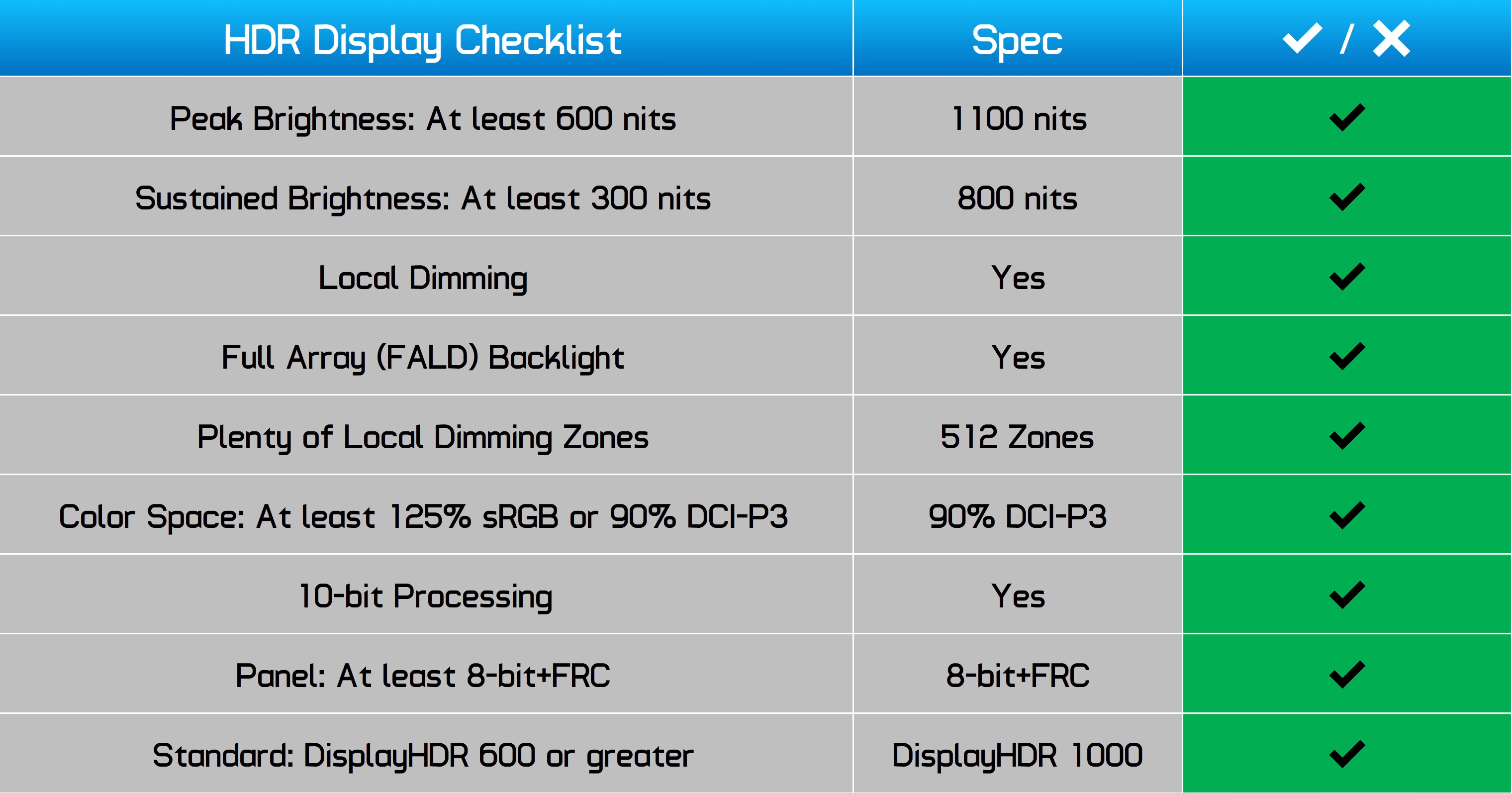
Per our checklist, every box is ticked, so this is a true HDR panel. The color space is wider than SDR with 90% DCI-P3 coverage, in our testing it was a little under this, but close enough. Brightness hits over 1,000 nits peak and, of course, we have the high zone count FALD backlight which provides much better contrast than SDR monitors.
Digging a little deeper on the brightness, 840 nits sustained in a full white window is higher than the PG27UQ, and you get 1,000 nits at 50% which then increases to around 1,060 nits at 25% or lower. This panel has a better and more powerful backlight that can be utilized up to 1,000 nits in more conditions. Besides of offering 840 nits peak, it is capable of a 1,100 nit white flash across the entire display which is eye scorching.
Brightness vs. % Screen White (HDR)
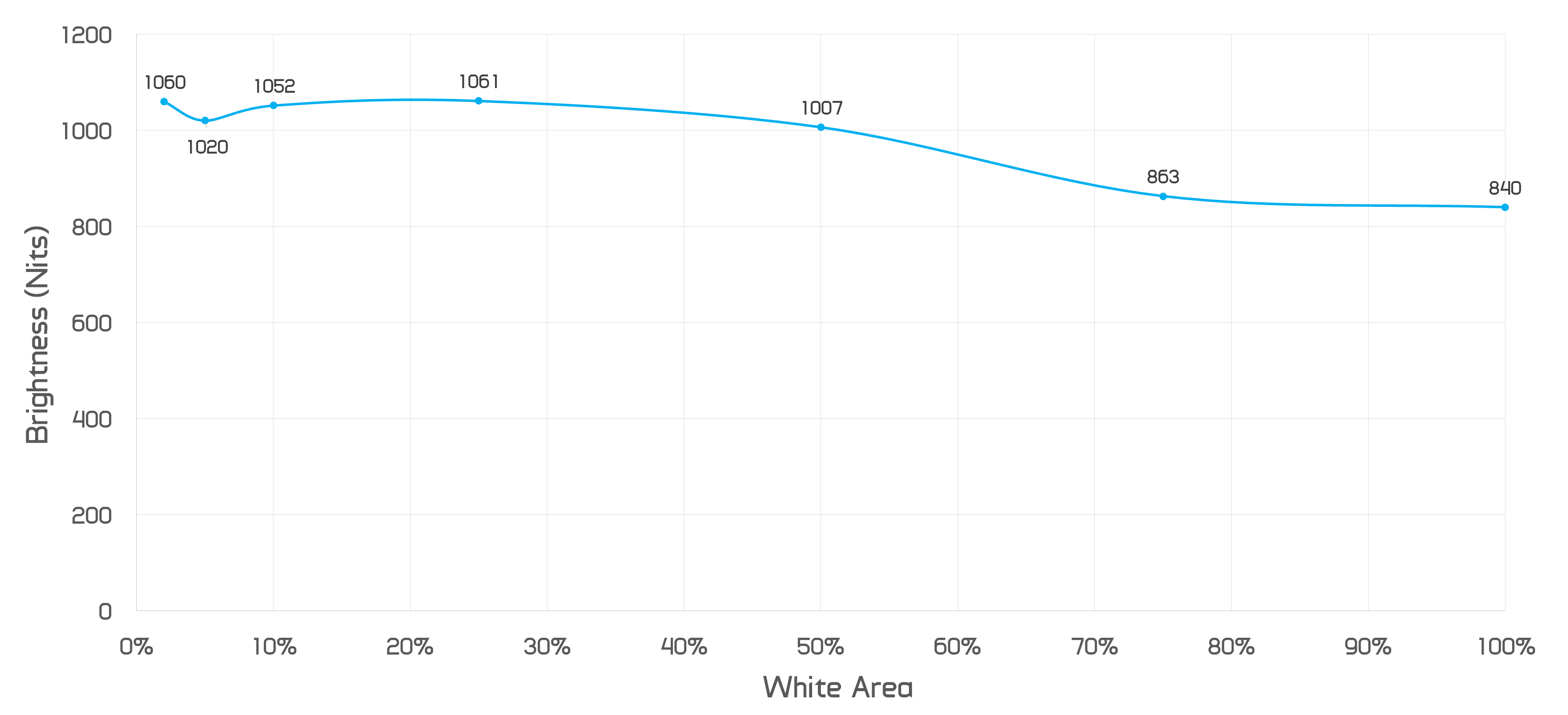
Black levels pushed the metering tools at our disposal to the limit. The best we can say is that the contrast ratio is at least 100,000:1 in the HDR mode, which again is higher than the G-Sync Ultimate monitors that use IPS panels. So combined with excellent brightness you get excellent contrast, exactly the intention of HDR displays.
There are also far more HDR capable games these days compared to last year when we first checked out the PG27UQ. Both Windows 10 and games are slowly improving how they handle HDR and many titles look absolutely spectacular when viewed on a proper HDR monitor like this. The experience is a lot better than standard SDR in these games and is quite hard to capture on camera, it's something you have to see for yourself, especially beside an SDR display. With better depth, better contrast and better colors games look truly amazing on the PG35VQ.

For SDR output the brightness is capped at around 500 nits whether the FALD backlight is enabled or disabled. With the dynamic backlight disabled, native contrast is around 2280:1 which is weak for a VA, but typical of AU Optronics' technology. But given the FALD backlight increases the contrast ratio to over 25,000:1 at 200 nits, it's mostly a non-issue.
Brightness vs. % Screen White (FALD backlight off)
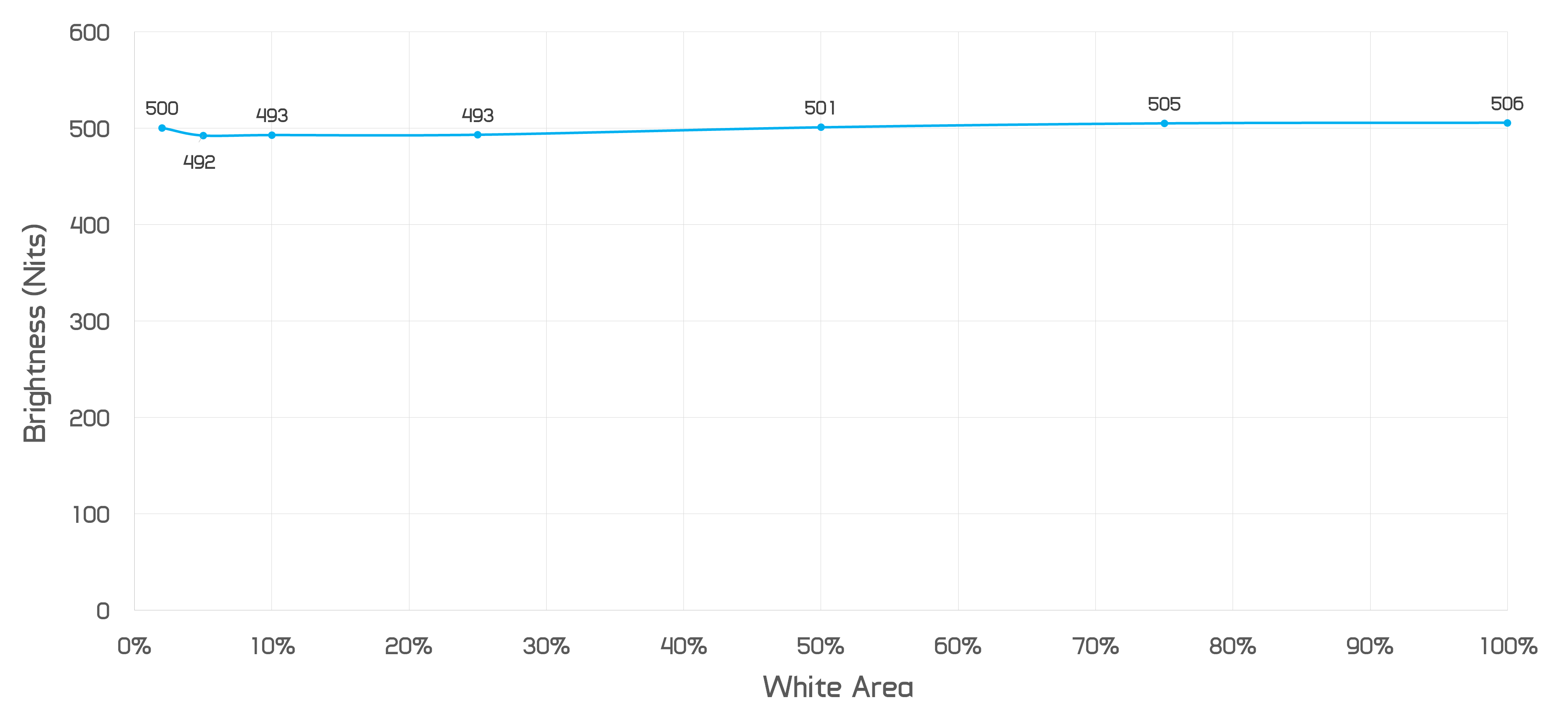
The ROG Swift PG35VQ comes with some degree of factory calibration. There is an SDR mode gamut switch in the monitor's OSD which defaults to sRGB, but can be switched to wide gamut if you need it for DCI-P3 work. We're not going to touch on DCI-P3 performance in detail, but it's about as accurate as the sRGB mode.
sRGB performance is decent out of the box. Greyscale performance is the only weak point and even then it's still good for a gaming-class display with a deltaE average of 2.37 and serviceable CCT and gamma performance. The white point of around 6300K is close to being accurate.
Default Color Performance
Saturation performance is strong, a deltaE average of 1.62 is close to the results Asus provides on their calibration sheet that comes in the box. ColorChecker results are also good, with a deltaE average of 1.76 and again you get similar sub-2.0 deltaE averages in the wide gamut mode when measuring against DCI-P3.
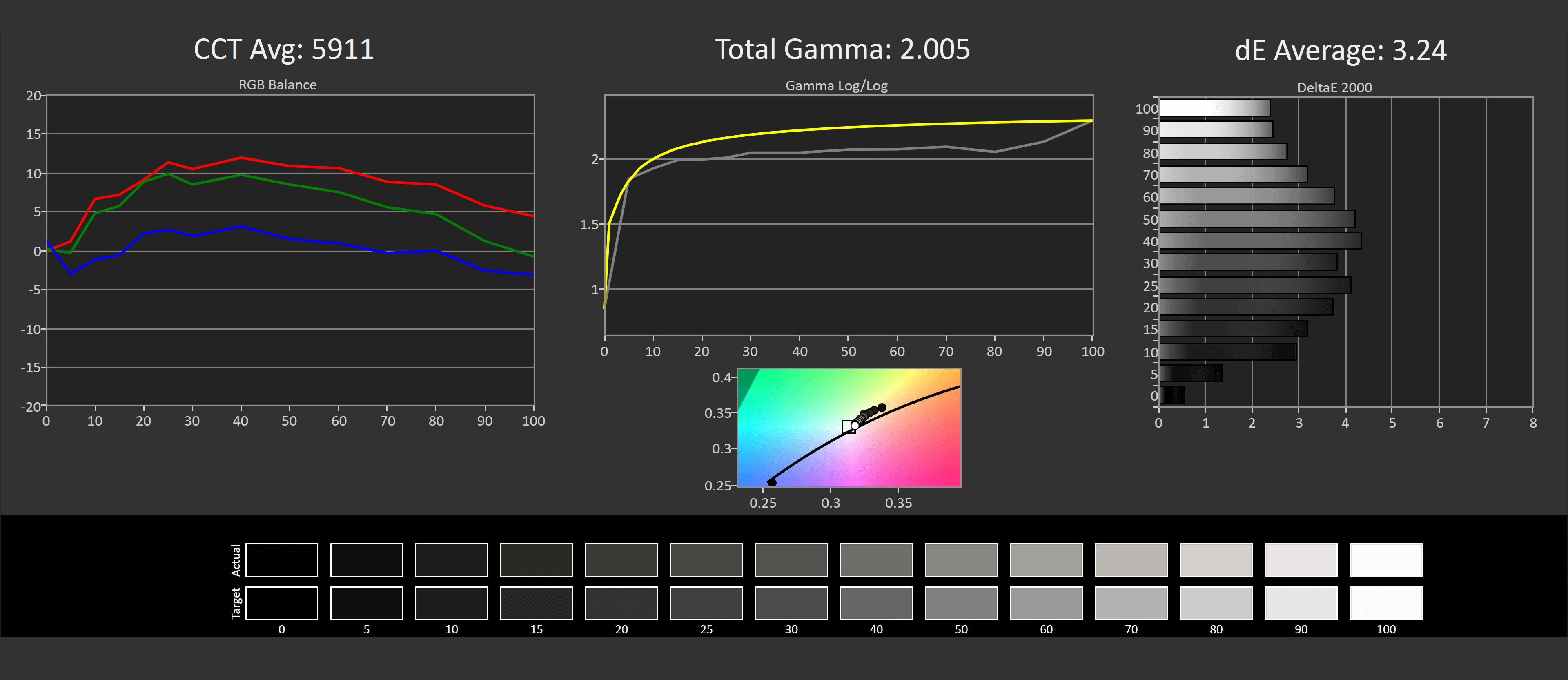
Interestingly, accuracy decreases if you disable the FALD backlight. It seems Asus has optimized this monitor for FALD usage which makes sense given you probably should be using it in most circumstances. DeltaE averages push to above 2.0 with default settings with the FALD backlight disabled, it's a small change but one worth noting.
OSD Tweaked Color Performance
It is possible to correct things further with a software ICC profile and some small OSD tweaks but we're not going to discuss that in detail given deltaE performance is already below 2.0 out of the box. It's not quite at the level of a professional display but for gamers, this sort of performance is excellent and isn't worth the hassle of software profiles.
Uniformity with the FALD backlight enabled is excellent, too, especially for a curved VA ultrawide panel which tend to be weaker in this area. Center performance is great with sub-2.0 deltaEs across pretty much the entire central zone. It's only on the outer edges where things fall away somewhat, which is typical. For a backlight with 512 individual zones this is a fabulous result and gives a generally uniform image.
Early Adopters' Dream
We're glad to report that a number of issues that were present with the first generation of G-Sync Ultimate displays like the Asus PG27UQ have been resolved or mitigated with the 35" ROG PG35VQ. Not having to mess around with chroma subsampling at the highest refresh rate is a huge bonus and though you're restricted to 8-bit color depth above 144 Hz, even for HDR gaming this was a non-issue in our testing. In other words, early adopters willing to pay top dollar are not making any big trade-offs for receiving tomorrow's technology first.
The use of VA technology along with the FALD backlight has reduced haloing, it is still there but it's better than first-gen IPS panels, and it also brings with it better overall contrast. And the fan, while still necessary, is less obnoxious than with the original high-end monitors.
We were also pleased to see 200 Hz at work on this form factor and resolution. Response times will vary depending on the configuration you go with, but with the FALD backlight enabled – which we think most people will opt to use at all times – 200 Hz is borderline doable without much dark level smearing. With the FALD backlight disabled you can get well within the 200 Hz barrier, but with worse dark level smearing and overshoot, so it just depends what you're after. Overall, considering the known limitations of VA technology this is a better than expected result.
Other areas of performance are also top notch. There's excellent input latency even in the HDR mode, superb HDR brightness levels, decent out of the box calibration with support for both sRGB and wide gamut modes, a great array of OSD features, very good uniformity and an adjustable stand.
When looking across all areas of this monitor, it is the best we've tested and the best on the market today.
When looking across all areas of this monitor, it is the best we've tested and the best on the market today. It combines a high resolution that's well suited to gaming, with a top-end refresh rate, and throws in true HDR performance into the mix with few issues and performance to back it all up. It's better than the 27-inch 4K 144Hz G-Sync Ultimate monitors in our opinion, although obviously it's a different format display, so it won't appeal to everyone.
As anticipated, the barrier of entry is going to be high. This is a premium monitor and it shows with a premium price tag that we estimate will be near the $3,000 mark, certainly above $2,500. Going by pre-order pricing in the UK, it'll likely end up $1,000 more expensive than the 27-inch 4K G-Sync Ultimate monitors, which will keep this in the range of buyers with deep pockets and high-end systems to match.
Looking at the entire display ecosystem today, for the same money as the ROG Swift PG35VQ you could get a very nice 55-inch LG C9 OLED TV plus a high-refresh ultrawide gaming monitor, but you wouldn't be getting the best on the market.
A more reasonable price would be between $1,500 to $2,000 considering you can buy a monitor like the LG 34GK950F right now for ~$1,100 which offers a 3440 x 1440 resolution at 144 Hz without the HDR capabilities. It is entirely possible that price point will be reached eventually as the technology matures and there is more competition, but for now we can attest to how good this new panel is and we're very excited about its imminent release.
Shopping Shortcuts:
- Asus ROG Swift PG35VQ on Amazon (coming soon)
- LG 34GK950F on Amazon
- Dell UltraSharp U4919DW on Dell.com, Amazon
- Acer Nitro XV273K 27" on Amazon, Newegg
- Asus ROG Swift PG27UQ on Amazon, Newegg
- Acer Predator X27 on Amazon, Newegg
- GeForce RTX 2080 on Amazon, Newegg
- GeForce RTX 2080 Ti on Amazon, Newegg
